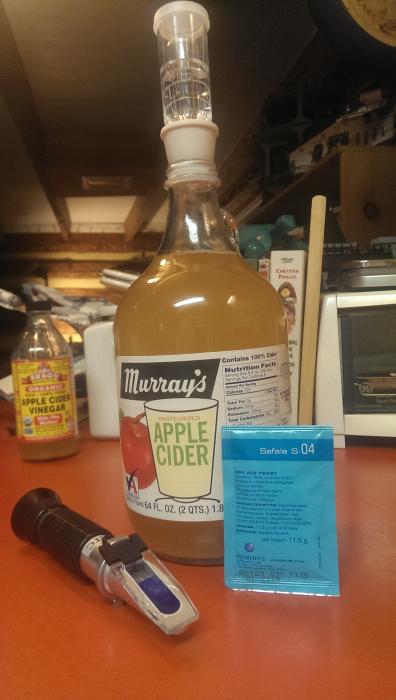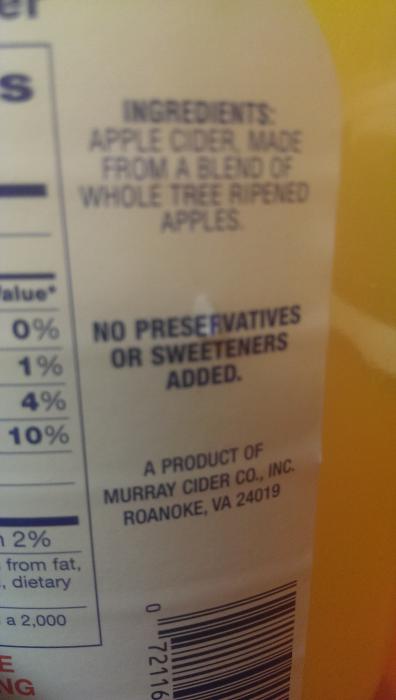taoisilent
Well-Known Member
Hello all,
I'm back into brewing after a long absence, and while I'm waiting for a new ale to condition, I thought I would experiment with cider. After all the reading I've done over the past few weeks, I have one nagging question.
I'm starting as simply as I can, as I am interested in what a basic cider tastes like. I simply added about 1/5 packet of S-04 English Ale Yeast to a gallon of Murray's Cider (VA) from Whole Foods. My OG was 1.051.
I plan to let it sit in one vessel for about a month. Then I'd like to bottle half still, and half carbonated. Now at the end of a month, I know I'll need to add some priming sugar, I plan to use dextrose (1/2 tsp per bottle). Here's my question:
Many of the forum posts and websites are advising to taste after 10 days to 2 weeks (The same for beer) and then once satisfied with the carbonation, to put it all in the fridge, or pasteurize it on the stove to halt fermentation in the bottle. Some mentioned preserving the taste or level of carbonation, others seemed to fear bottle bombs.
Now I've been bottle conditioning beer on and off for 15 years or so, and I've never had an exploding bottle, and a negligible amount of gushers, so is this a real problem with cider? Is it not possible to bottle age carbonated cider without pasteurizing?


I'm back into brewing after a long absence, and while I'm waiting for a new ale to condition, I thought I would experiment with cider. After all the reading I've done over the past few weeks, I have one nagging question.
I'm starting as simply as I can, as I am interested in what a basic cider tastes like. I simply added about 1/5 packet of S-04 English Ale Yeast to a gallon of Murray's Cider (VA) from Whole Foods. My OG was 1.051.
I plan to let it sit in one vessel for about a month. Then I'd like to bottle half still, and half carbonated. Now at the end of a month, I know I'll need to add some priming sugar, I plan to use dextrose (1/2 tsp per bottle). Here's my question:
Many of the forum posts and websites are advising to taste after 10 days to 2 weeks (The same for beer) and then once satisfied with the carbonation, to put it all in the fridge, or pasteurize it on the stove to halt fermentation in the bottle. Some mentioned preserving the taste or level of carbonation, others seemed to fear bottle bombs.
Now I've been bottle conditioning beer on and off for 15 years or so, and I've never had an exploding bottle, and a negligible amount of gushers, so is this a real problem with cider? Is it not possible to bottle age carbonated cider without pasteurizing?





























![Craft A Brew - Safale S-04 Dry Yeast - Fermentis - English Ale Dry Yeast - For English and American Ales and Hard Apple Ciders - Ingredients for Home Brewing - Beer Making Supplies - [1 Pack]](https://m.media-amazon.com/images/I/41fVGNh6JfL._SL500_.jpg)





























